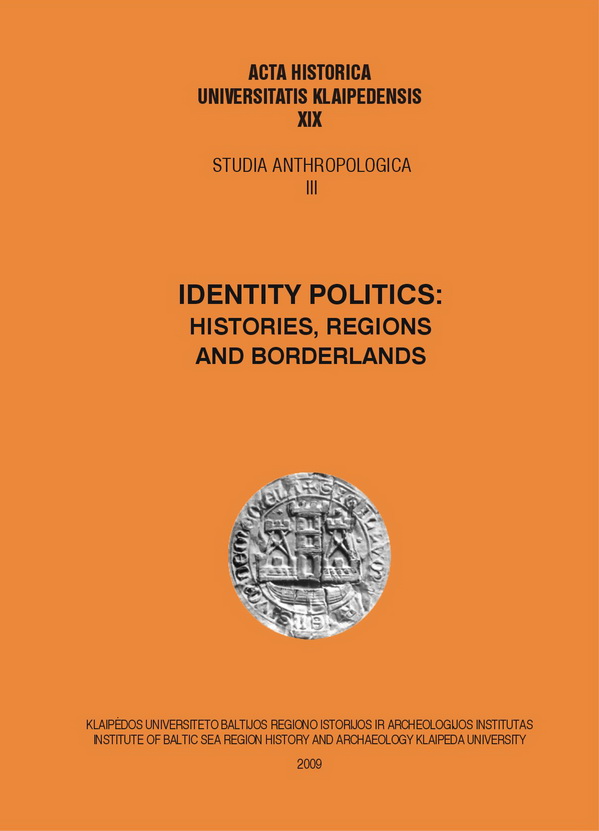Volume 19 (2009): Studia Anthropologica, III: Identity Politics: Histories, Regions and Borderlands, October 2009

Order by:
Pub. online: 15 Oct 2009
Type: Introduction
 Open Access
Open Access
Journal:
Acta Historica Universitatis Klaipedensis
Volume 19 (2009): Studia Anthropologica, III: Identity Politics: Histories, Regions and Borderlands, pp. 5–8
Pub. online: 15 Oct 2009
Type: Article
 Open Access
Open Access
Journal:
Acta Historica Universitatis Klaipedensis
Volume 19 (2009): Studia Anthropologica, III: Identity Politics: Histories, Regions and Borderlands, pp. 9–24
Abstract
Pub. online: 15 Oct 2009
Type: Article
 Open Access
Open Access
Journal:
Acta Historica Universitatis Klaipedensis
Volume 19 (2009): Studia Anthropologica, III: Identity Politics: Histories, Regions and Borderlands, pp. 25–47
Abstract
Pub. online: 15 Oct 2009
Type: Article
 Open Access
Open Access
Journal:
Acta Historica Universitatis Klaipedensis
Volume 19 (2009): Studia Anthropologica, III: Identity Politics: Histories, Regions and Borderlands, pp. 49–57
Abstract
Pub. online: 15 Oct 2009
Type: Article
 Open Access
Open Access
Journal:
Acta Historica Universitatis Klaipedensis
Volume 19 (2009): Studia Anthropologica, III: Identity Politics: Histories, Regions and Borderlands, pp. 59–68
Abstract
Pub. online: 15 Oct 2009
Type: Article
 Open Access
Open Access
Journal:
Acta Historica Universitatis Klaipedensis
Volume 19 (2009): Studia Anthropologica, III: Identity Politics: Histories, Regions and Borderlands, pp. 69–78
Abstract
Pub. online: 15 Oct 2009
Type: Article
 Open Access
Open Access
Journal:
Acta Historica Universitatis Klaipedensis
Volume 19 (2009): Studia Anthropologica, III: Identity Politics: Histories, Regions and Borderlands, pp. 79–91
Abstract
Pub. online: 15 Oct 2009
Type: Article
 Open Access
Open Access
Journal:
Acta Historica Universitatis Klaipedensis
Volume 19 (2009): Studia Anthropologica, III: Identity Politics: Histories, Regions and Borderlands, pp. 93–106
Abstract
Pub. online: 15 Oct 2009
Type: Article
 Open Access
Open Access
Journal:
Acta Historica Universitatis Klaipedensis
Volume 19 (2009): Studia Anthropologica, III: Identity Politics: Histories, Regions and Borderlands, pp. 107–114
Abstract
Pub. online: 15 Oct 2009
Type: Article
 Open Access
Open Access
Journal:
Acta Historica Universitatis Klaipedensis
Volume 19 (2009): Studia Anthropologica, III: Identity Politics: Histories, Regions and Borderlands, pp. 115–129
Abstract